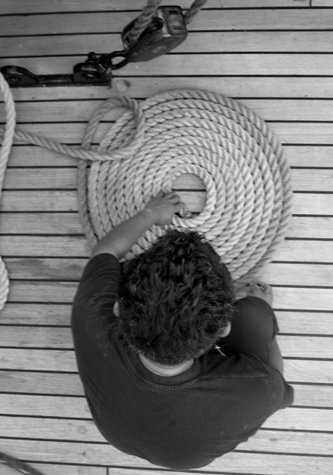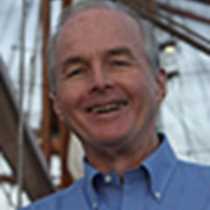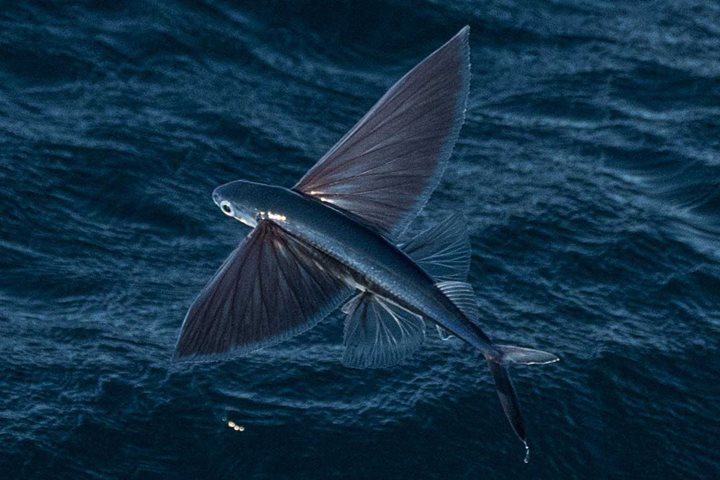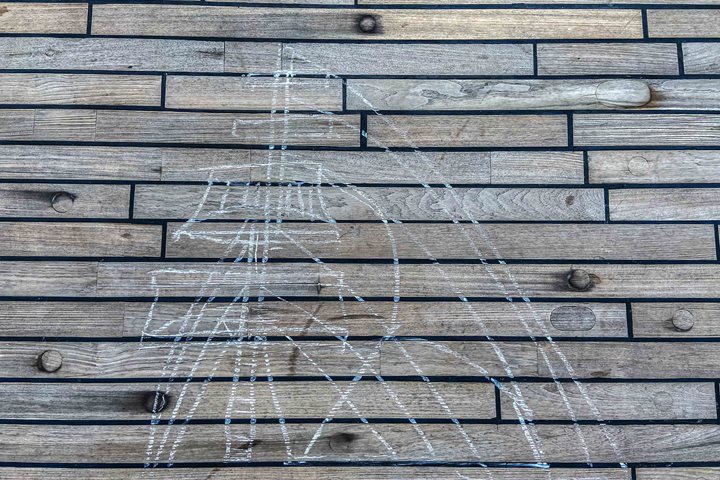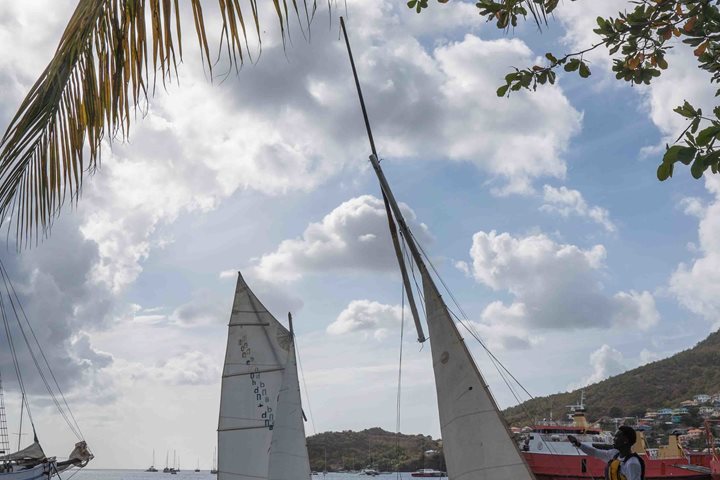We sailed overnight and made good progress to our first land sighting of St. Lucia. I was awakened about 5:30 a.m. by a harsh screeching sound. I walked on the promenade deck and assumed it was the sound of the wind roaring in the rigging. We frequently hear this if the wind is strong. Alberto, who was also wakened by the sound, however, immediately identified it as the sound of a red-billed tropicbird. He said it was likely somewhere on the ship. I went up the ladder to the lido deck and on the port side hard against one of the walls nestled in the lee was a beautiful large white bird with a brilliant red beak, sitting on the deck. I immediately called to Alberto who came up and confirmed his earlier identification. He then walked over to the bird distracted it and was able to grab it without injuring it. It was not happy screeching loudly but soon calmed down. It had a long sharp beak and I can assure you I would never have touched it. We brought it down to the port side of the bow. Alberto placed it on a high cabinet where it could get a breeze to help in take off. I ran into the cabin and got the camera and as I was focusing for the photo a nice gust of wind came, the bird felt it and off it flew in a flash. A rescue at sea! The moral is keep your eyes and ears open on the Sea Cloud as you may find a tropical bird where you least expect it.
Additional sails were furled at 9 a.m. and Tom O’Brien gave an illustrated talk on the sails and rigging. The staff was introduced to the guests at 10:30 and we had a very nice lunch at 12:30. Tom Heffernan introduced the extraordinary story of Diamond Rock—a basalt lava plug almost 580 feet high, which sits three kilometers off the southwest of Martinique—and its capture by the English troops in January of 1803 and its subsequent recapture by the French under Admiral Villeneuve on 3 June 1805. The English Admiralty actually commissioned the rock “HMS Diamond Rock” on the 7th of February 1804. The first time, I believe, a massive fixed, immoveable basal mountain was turned into a naval vessel. Tom Heffernan then gave a lecture entitled “Trinkets, Sugar, and Slaves: White Gold and the Triangular Trade,” a history of the slave trade and sugar in the West Indies. The sails were reefed at 5:30 and many took the opportunity to photograph the seamen as they climbed aloft. The main mast, the tallest mast on the Sea Cloud, is 185 feet high. One needs to very skilled and a tad fearless to climb it, particularly in the wind when the ship is moving.
Tonight Captain Komakin hosted a lovely cocktail party followed by his welcome dinner. It was a lovely affair and although people have only been on the Sea Cloud for one day it was abundantly clear that the magic of sailing on her was infectious and the guests were enjoying each others company. Peter Czifra played beautifully before and after dinner. We went to bed tired but exhilarated after our first full day on the Sea Cloud. Tomorrow we begin the adventure of exploring the beautiful island of Dominica.

